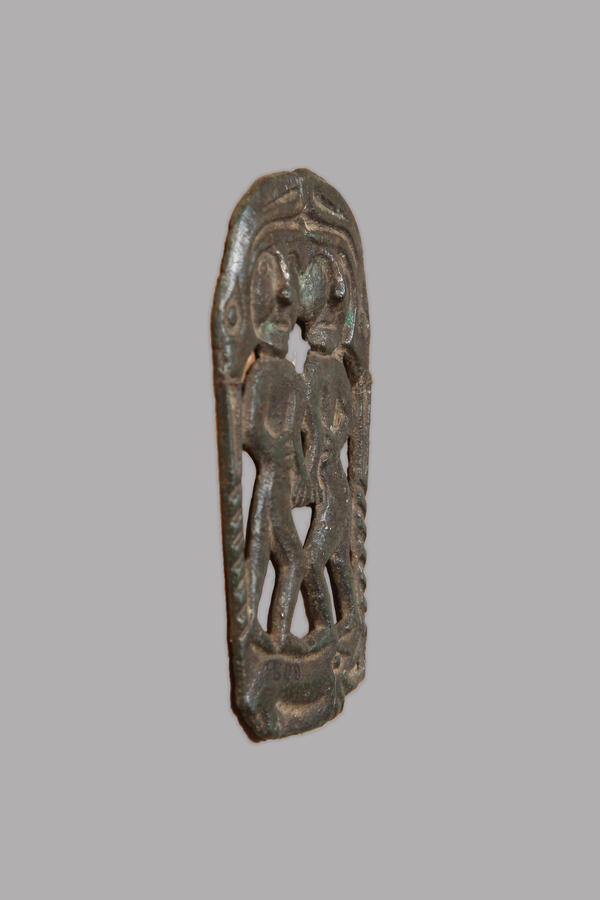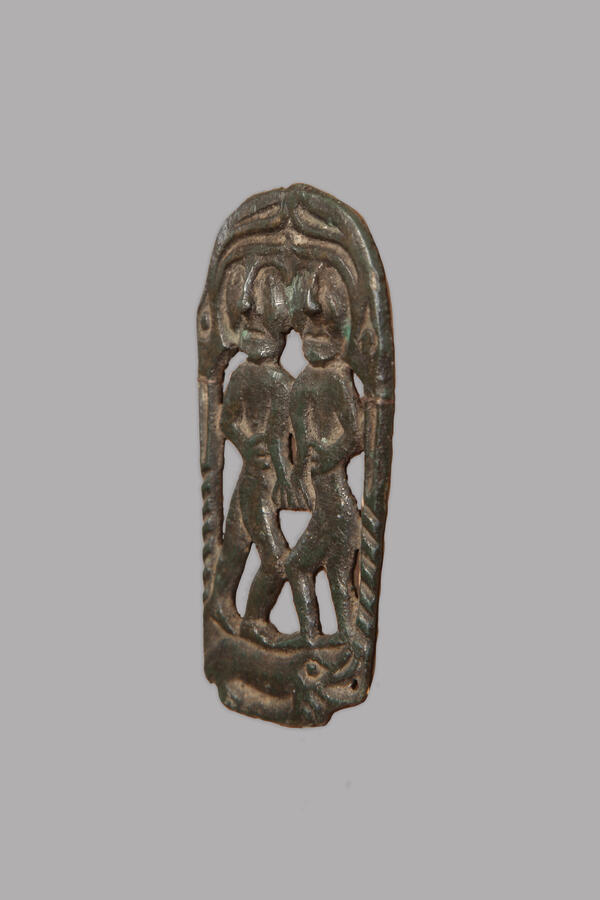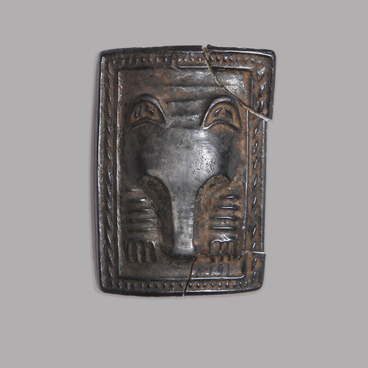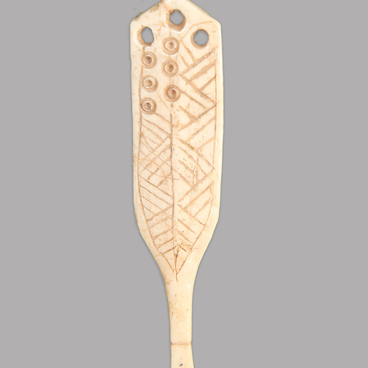This pendant was discovered in the village Bolshaya Kocha, Perm Territory. Such items are usually found at the sites of sanctuaries, burials, hoards and workshops. They were cast in silver and gold, but in the 19th century many of the finds were lost after merchants had melted them down to make new items. Bronze plates, plaques and buckles have survived in greater numbers.
The pendant is a typical example of the Perm animal style, which constitutes most of the artistic heritage of the medieval Urals, Finno-Ugric tribes and the Chude people. It has been studied for more than a hundred years, but remains a mysterious phenomenon of Eurasian culture. The craftsmen working in the Perm animal style did not have a writing system yet, so all their ideas about the world order are encapsulated in animal symbolism without any additional records. The items made in the Perm animal style are also called “chudsky icons” and “cult casts”.
The principal characteristic of the Perm animal style is combining the features of different living beings in one image. All of them are endowed with magical properties and symbolize the three worlds. The upper world is inhabited by birds that take the souls of the dead, and also by mammals. The lower world, the underworld, is represented by moles, snakes, fish and lizards. Between the two opposing worlds is the central image of the human being. This may be a collective image of a mortal or an incarnation of a god.
In the center of the pendant are two full-length human figures with their heads, shoulders, hands and knees touching. The figures stand on a conventional lizard, which guards the entrance to the afterlife. The upper vault is made of elk heads, one of the most popular motifs of the Perm animal style. Humans were often depicted with an elk head or hooves: the elk was an earthly incarnation of the god En.
In the pre-Christian mythology of the Komi-Permyak people there were two supreme gods — En and Kul’. Their mother was a duck, who created the Earth. Each image of an animal on the pieces of ancient craftsmen was a clan or tribal symbol, which connected a person with his totem — a guardian creature from the surrounding world of flora and fauna.
The pendant is a typical example of the Perm animal style, which constitutes most of the artistic heritage of the medieval Urals, Finno-Ugric tribes and the Chude people. It has been studied for more than a hundred years, but remains a mysterious phenomenon of Eurasian culture. The craftsmen working in the Perm animal style did not have a writing system yet, so all their ideas about the world order are encapsulated in animal symbolism without any additional records. The items made in the Perm animal style are also called “chudsky icons” and “cult casts”.
The principal characteristic of the Perm animal style is combining the features of different living beings in one image. All of them are endowed with magical properties and symbolize the three worlds. The upper world is inhabited by birds that take the souls of the dead, and also by mammals. The lower world, the underworld, is represented by moles, snakes, fish and lizards. Between the two opposing worlds is the central image of the human being. This may be a collective image of a mortal or an incarnation of a god.
In the center of the pendant are two full-length human figures with their heads, shoulders, hands and knees touching. The figures stand on a conventional lizard, which guards the entrance to the afterlife. The upper vault is made of elk heads, one of the most popular motifs of the Perm animal style. Humans were often depicted with an elk head or hooves: the elk was an earthly incarnation of the god En.
In the pre-Christian mythology of the Komi-Permyak people there were two supreme gods — En and Kul’. Their mother was a duck, who created the Earth. Each image of an animal on the pieces of ancient craftsmen was a clan or tribal symbol, which connected a person with his totem — a guardian creature from the surrounding world of flora and fauna.




